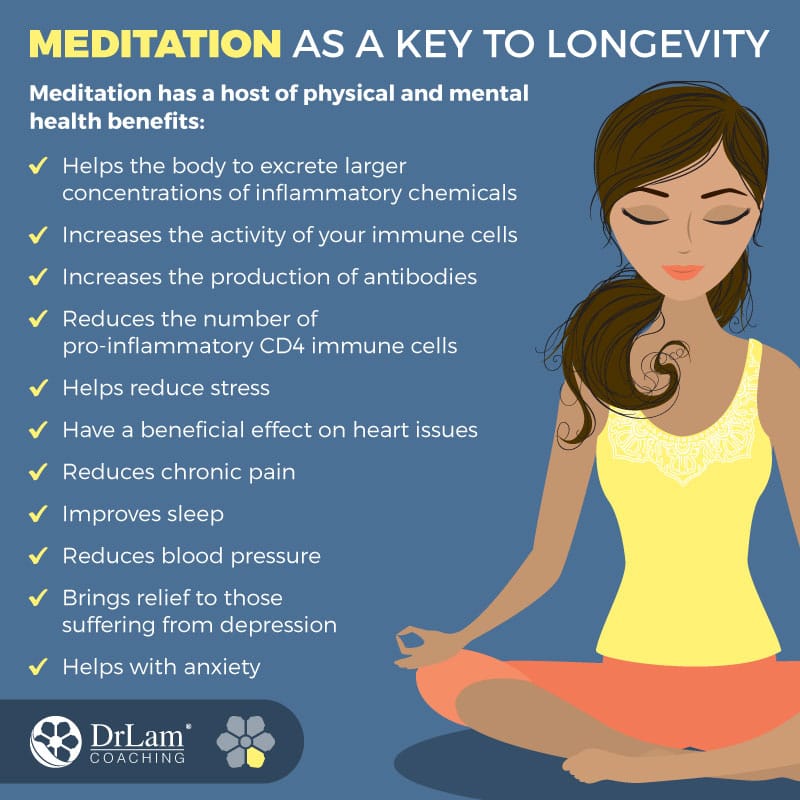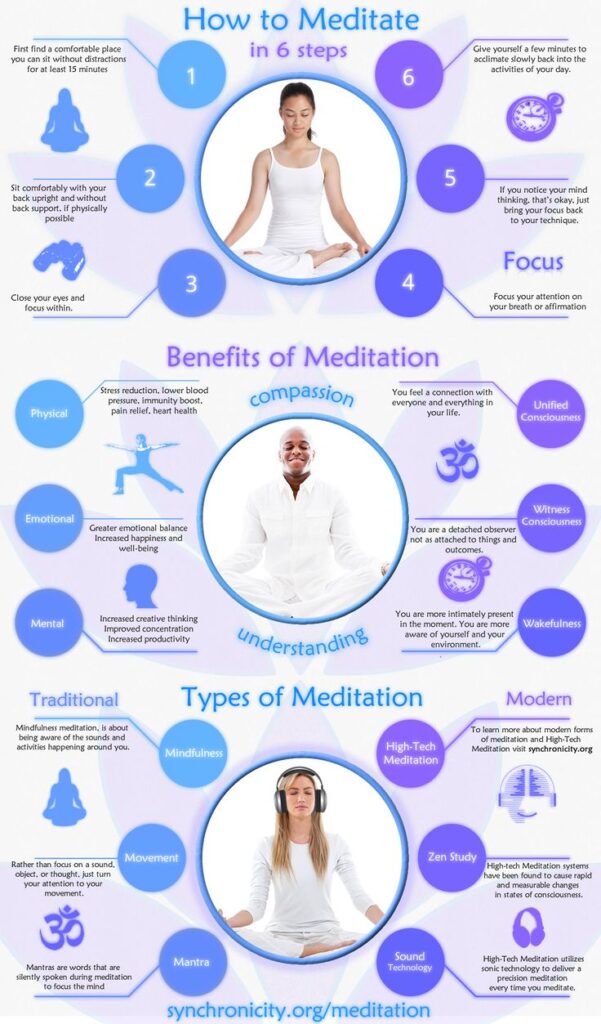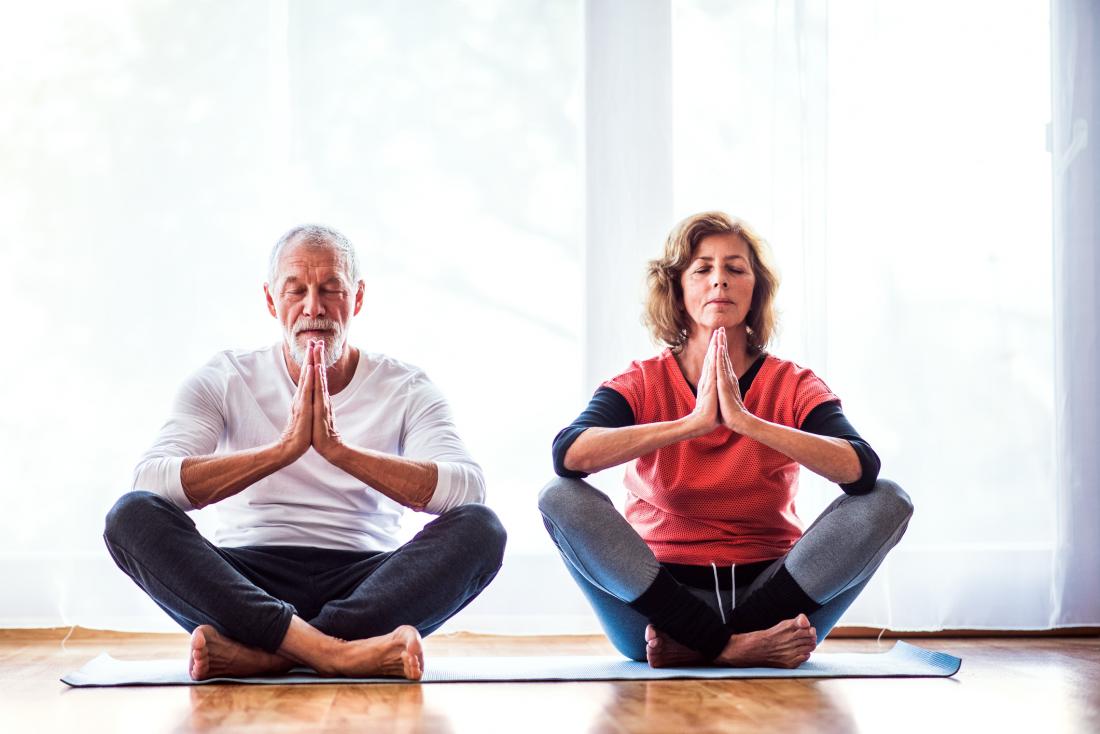We’re living longer than ever before. Advances in medicine and public health have added decades to the average lifespan. But here’s the paradox—many people are not living better.
Chronic illness is rising. Heart disease, diabetes, and autoimmune disorders affect people earlier in life. Cognitive decline is becoming common even before old age. And burnout isn’t just a workplace issue—it’s a health crisis.
We’ve extended life, but not vitality. The body ages faster under stress. The mind loses clarity. Emotional resilience fades. This is where meditation enters—not as a spiritual escape, but as a science-backed intervention. Research shows it can slow aging at the cellular level. It improves how we feel, think, and heal.
Meditation is more than stress relief. It transforms how we age. Not just how long we live, but how well we live. The future of longevity isn’t just in labs. It’s also in our breath.
The Cellular Science of Aging and Meditation
Aging begins at the cellular level. One of the key players in this process is the telomere. Telomeres are protective caps at the ends of our chromosomes. Think of them like the plastic tips on shoelaces—they keep our DNA from fraying during cell division.
Each time a cell divides, telomeres get shorter. Over time, they become too short to protect the DNA. This leads to cell damage, dysfunction, and eventually cell death. Shorter telomeres are linked to aging, disease, and early mortality.
But there’s hope. Nobel Prize-winning scientist Dr. Elizabeth Blackburn and health psychologist Dr. Elissa Epel found a powerful connection between long-term meditation and longer telomeres.
In their studies, people who practiced mindfulness regularly showed signs of slower cellular aging. How does this work? Meditation may reduce oxidative stress and lower inflammation—both of which accelerate telomere shortening.
It also appears to affect gene expression through epigenetic pathways. That means it can help “switch off” genes that promote inflammation and aging. Mindfulness doesn’t just change your state of mind. It changes your biology.
By protecting telomeres and improving how genes express themselves, meditation becomes a tool for cellular longevity—keeping your cells younger, longer.
Stress: The Hidden Accelerator of Aging
Stress isn’t just a mental state—it’s a full-body biological event. When we face constant pressure, the body activates the sympathetic nervous system. This is the “fight or flight” response. It’s designed for short bursts of danger, not chronic tension.
Alongside this, the HPA axis—the hypothalamus, pituitary gland, and adrenal glands—kicks in. This system floods the body with cortisol, the primary stress hormone. In small doses, cortisol helps us react to challenges. But with chronic stress, cortisol levels stay high.
This leads to widespread damage. High cortisol weakens the immune system. It increases inflammation, a key driver of aging. It also raises blood sugar and blood pressure, straining the heart and blood vessels.
Stress triggers oxidative stress too. This damages cells and DNA, speeding up the aging process. Over time, brain structures like the hippocampus shrink, impacting memory and cognition.
Unmanaged stress has been linked to heart disease, diabetes, anxiety, and even cancer. It wears down the body, from the inside out. In simple terms, stress makes us age faster. And not just on the outside—but deep in our cells, where true aging begins.

Mindfulness as a Biological Reset
Chronic stress keeps the body in a state of low-grade inflammation. Over time, this quiet fire damages tissues and speeds up aging. But mindfulness can help put out the flames.
Studies show that mindfulness meditation reduces two major markers of inflammation—C-reactive protein (CRP) and interleukin-6 (IL-6). These proteins rise when the body is under stress or fighting off illness.
High levels are linked to heart disease, arthritis, and even cancer. Mindfulness lowers these markers by calming the nervous system. When we meditate, the body shifts from the sympathetic “fight or flight” state to the parasympathetic “rest and digest” mode.
This switch is essential for healing and repair. One powerful indicator of this shift is heart rate variability (HRV). HRV measures the time between heartbeats. Higher HRV means the body can quickly adapt to stress and recover.
It’s a sign of nervous system flexibility and resilience. Regular mindfulness practice boosts HRV. Even short daily sessions—10 to 15 minutes—can lead to noticeable improvements. These changes signal that the body is learning to bounce back from stress more efficiently.
This isn’t just about feeling calm in the moment. Over time, mindfulness retrains the body to stay out of chronic stress mode. It lowers inflammation, balances the nervous system, and supports long-term health.
Even brief moments of stillness can act like a biological reset. With consistency, these small practices build into big changes. The result? A body that heals better, adapts faster, and ages slower.
Hormonal Harmony Through Stillness
Our hormones shape how we age. Three key ones play a major role—cortisol, DHEA, and melatonin. Cortisol is the body’s main stress hormone. It helps us respond to danger. But when cortisol stays elevated for too long, it causes harm.
It breaks down muscle, increases belly fat, disrupts sleep, and weakens the immune system. DHEA, often called the “youth hormone,” works as a counterbalance. It supports tissue repair, strengthens bones, and boosts mood.
Higher DHEA levels are linked to slower aging and better resilience. Melatonin regulates the sleep-wake cycle. But it does more than help us sleep. It’s also a powerful antioxidant that protects cells and slows age-related damage.
Mindfulness and breathwork help bring these hormones into balance. Slow, deep breathing and stillness reduce cortisol. At the same time, they support the natural production of DHEA and melatonin. This balance improves more than just stress.
It enhances metabolism, sharpens focus, boosts immunity, and deepens emotional stability. When hormones are in harmony, the body functions more efficiently. It repairs faster, defends better, and stays younger, longer.
Meditation isn’t just calming—it’s a hormonal tune-up for healthy aging.
The Role of Deep Sleep in Regenerative Aging
Sleep is the body’s most powerful repair system. During deep sleep, the brain activates the glymphatic system. This process clears out toxins, including beta-amyloid—a protein linked to Alzheimer’s disease. It’s like a nightly cleanse for the brain.
Sleep also supports tissue repair. Growth hormone is released during deep sleep, helping the body heal and regenerate. At the same time, key hormones like cortisol, insulin, and melatonin are brought back into balance.
Without enough quality sleep, aging speeds up. Inflammation rises, memory declines, and the immune system weakens. This is where meditation helps. Especially when practiced in the evening, mindfulness calms the nervous system and prepares the body for rest.
It reduces mental chatter, lowers heart rate, and signals the brain that it’s time to sleep. Studies have shown that regular mindfulness practice improves sleep quality. It increases time spent in REM sleep—the stage linked to memory and emotional processing.
In fact, research from institutions like Harvard Medical School has found that mindfulness can be as effective as some sleep medications, without the side effects. Better sleep means better aging. Meditation helps us get there—naturally, deeply, and consistently.
Mindful Living Equals Better Choices
Mindfulness strengthens the mind’s ability to pause. In that pause, we make better decisions. It increases self-awareness and reduces impulsivity. We become more conscious of our thoughts, emotions, and habits.
This awareness affects everyday choices. Mindful people are more likely to eat slowly and choose healthier foods. They listen to hunger cues and avoid emotional eating. Exercise becomes more consistent too. Mindfulness builds discipline without pressure.
It helps people stay present during physical activity, making movement more enjoyable. Emotionally, mindfulness creates space between stimulus and response. This reduces reactivity. It improves mood stability and lowers anxiety.
People become better at handling setbacks without being overwhelmed. Socially, mindfulness fosters empathy and active listening. Mindful individuals tend to have stronger, more fulfilling relationships.
Research shows that strong social ties are one of the most powerful predictors of long life. By living with intention, mindful people avoid many self-destructive patterns. They drink less, smoke less, and manage stress better.
Over time, these small daily choices add up. They create a foundation for lasting health and resilience. Mindfulness is not just about meditation. It’s about how we live—moment to moment, choice by choice. And those choices are what shape a long, meaningful life.
Introducing a Time-Efficient Longevity Meditation Protocol
Longevity doesn’t require hours of meditation or expensive wellness retreats. A simple, consistent practice can create powerful change. That’s where this 10–15 minute daily protocol comes in.
It’s designed to fit into busy lives while targeting the core drivers of healthy aging. The method combines three key elements: breathwork, body awareness, and intention setting. You begin with slow, deep breathing to calm the nervous system and lower cortisol.
Next, you scan the body—tuning into sensations to anchor awareness and reduce mental clutter. Finally, you set a clear intention: a word or phrase that guides your energy for the day. This short routine creates what we call the “stacking effect.”
One practice touches many systems. It supports hormone balance, reduces inflammation, enhances sleep, and improves focus. It’s like getting multiple health benefits from a single habit. No special equipment, apps, or background music needed.
No need to attend a retreat. Just sit, breathe, and repeat daily. It’s meditation made accessible—and powerful. With consistency, this protocol becomes more than a routine. It becomes a ritual of renewal. One that helps you age with clarity, strength, and grace.

Case Study: From Burnout to Biological Renewal
Meet Sarah, a 38-year-old marketing executive. Her life was fast-paced and stressful. Long hours, tight deadlines, and constant pressure had taken a toll. She felt exhausted, anxious, and disconnected.
Sarah noticed signs of premature aging—poor sleep, frequent headaches, and low energy. Her doctor warned about high cortisol levels and early inflammation markers. She knew she needed a change but had no time for long retreats or complicated wellness plans.
Sarah decided to try the 10–15 minute longevity meditation protocol. She committed to practicing it every morning before work. Within two weeks, Sarah reported better sleep. She fell asleep faster and woke up feeling more rested.
Her mood improved, with less anxiety and more emotional balance. After one month, objective measures backed up her experience. Her heart rate variability (HRV)—a key sign of nervous system resilience—improved by 15%.
Her cortisol levels dropped significantly, confirmed through saliva tests. Inflammation markers like CRP showed a noticeable decline. Sarah’s energy surged. She no longer relied on caffeine or sugar to get through the day. She felt more focused and productive.
Colleagues noticed a calmer, more grounded Sarah. She handled stress better and communicated more clearly. After three months, Sarah felt like a new person. She reversed many signs of burnout and premature aging without drastic lifestyle changes.
Her story shows how a simple, consistent meditation practice can restore health from within. Even in a busy life, renewal is possible. Sarah’s transformation proves that longevity is a practice, not a privilege. With just 10 minutes a day, anyone can turn back the clock—biologically and mentally.
Longevity is Not Genetic—It’s Practiced
Our genes set the stage, but they don’t tell the whole story. They load the gun, but our habits pull the trigger. How we live daily shapes how we age. Meditation is often seen as a spiritual practice. But it is also a powerful physiological tool.
It rewires the brain, calms the nervous system, and protects cells from damage. Science shows that mindfulness slows aging at its core. It balances hormones, reduces inflammation, improves sleep, and strengthens the heart.
The best part? It’s accessible to everyone. No special equipment or expensive treatments are needed. Just a few minutes each day can make a profound difference. You don’t have to wait for illness or decline to start caring for your health. Longevity is a skill.
And it begins with a single breath. The power to live longer—and better—is in your hands. Start now.
FAQs on “Longevity Meets Mindfulness: The Science of Using Meditation to Extend Your Lifespan”
What is mindfulness meditation?
Mindfulness meditation is a practice that involves focusing attention on the present moment with openness and without judgment.
How does meditation affect aging?
Meditation can slow cellular aging by reducing stress, inflammation, and improving hormone balance.
What are telomeres, and why do they matter?
Telomeres are protective caps on chromosomes that shorten with age. Longer telomeres are linked to slower aging and better health.
Can meditation actually lengthen telomeres?
Studies show long-term meditators tend to have longer telomeres compared to non-meditators, suggesting slower cellular aging.
How does stress accelerate aging?
Chronic stress raises cortisol levels, increases inflammation, and damages cells, speeding up the aging process.
What is heart rate variability (HRV) and why is it important?
HRV measures the time between heartbeats and reflects nervous system resilience; higher HRV indicates better stress management.
How does meditation improve HRV?
Meditation activates the parasympathetic nervous system, increasing HRV and enhancing the body’s ability to recover from stress.
Which hormones does meditation influence?
Meditation helps regulate cortisol, boosts DHEA (the youth hormone), and supports melatonin production for better sleep.
Why is deep sleep important for longevity?
Deep sleep clears brain toxins, repairs tissue, and balances hormones critical for healthy aging.
Can meditation improve sleep quality?
Yes, mindfulness practices reduce anxiety and promote relaxation, leading to deeper, more restorative sleep.
Is meditation more effective than sleep medication?
Some studies suggest mindfulness can be as effective as certain sleep medications, without side effects.
How does mindfulness lead to healthier lifestyle choices?
Mindfulness increases self-awareness and reduces impulsivity, encouraging better eating, exercise, and emotional regulation.
Can meditation help reduce burnout?
Regular meditation lowers stress hormones and inflammation, which can reverse symptoms of burnout.
How long should I meditate to see longevity benefits?
Even 10–15 minutes a day can produce meaningful biological and psychological changes.
Do I need special equipment or apps for meditation?
No. Meditation can be done anywhere with no tools—just consistent practice.
Can busy people benefit from meditation?
Yes, even brief daily meditation can stack benefits over time, improving health and resilience.
Is meditation only for older adults?
No, people of all ages can use meditation to improve health and slow aging.
What is the “stacking effect” in meditation?
It refers to one meditation practice improving multiple longevity pathways simultaneously, like hormone balance and inflammation reduction.
Can meditation change gene expression?
Emerging research suggests meditation can influence epigenetic markers that control aging and inflammation.
How do I get started with meditation for longevity?
Begin with short, guided breathwork sessions focusing on body awareness and intention setting. Consistency is key.





